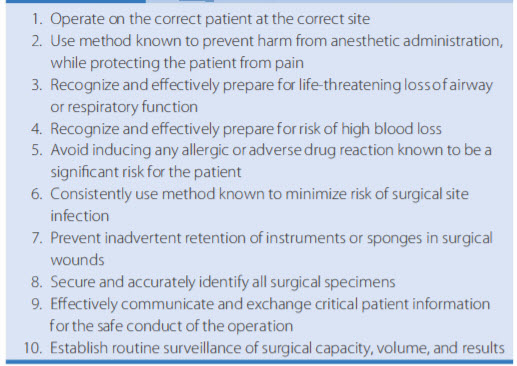Question 3#
After you establish an advanced surgical department in a foreign country, a 55-year-old woman presents with right upper quadrant pain of 3 months occurring after every meal. An ultrasound shows a thickened gallbladder wall and peri cholecystic fluid and a diagnosis of cholecystitis is made. The patient undergoes a laparoscopic cholecystectomy. The World Health Organization's (WHO) 10 basic and essential objectives for safe surgical practice focus on all of the following EXCEPT:
A. Preparing for life-threatening loss of airway or respiratory functionB. Minimizing surgical-site infection
C. Minimizing cost and length of hospital stay for the patient
D. Communicating critical patient information
Correct Answer is C
Comment:
Surgeons strive to constantly improve morbidity and mortality of their patients. In resource-limited areas access to certain pre and postop interventions or monitoring may be limited and in order to minimize complications, the World Health Organization (WHO) enacted the Safe Surgery Saves Lives Initiative. This campaign targeted preventable injuries and was found to have a 50% decrease in mortality. The 10 objectives for safe surgery include: identifying the correct patient and site, prevention of harm and pain, preparing for life-threatening airway compromise, preparing for high-risk blood loss, avoiding allergic reactions or reactions to drugs, minimizing surgicalsite infections, preventing retained sponges, identifying all surgical specimens, effective han d-offs of patient information, and routine patient surveillance (Table below).
Ten basic and essential objectives for safe surgery (WHO*):

*Data from WHO Guidelines for Safe Surgery 2009. http://whqlibdoc.who.int/publications/ 2009/9789241 598552_eng.pdf